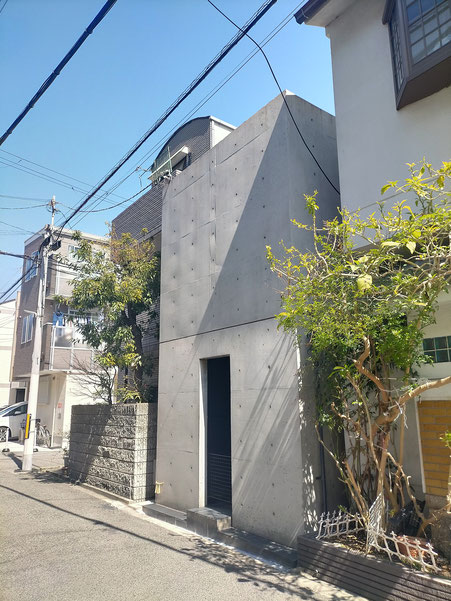Tadao Ando Architecture

Born : September 13th, 1941
Winner of Pritzker Prize in 1995
Born and raised in Osaka, Ando was a boxer before pursuing architecture. He has done quite a few works outside Japan, so he might be one of the more well-known Japanese architects in the world.
Ando's reputation was somewhat tarnished in the fiasco leading up to the scrapping of Zaha Hadid's design of the Tokyo Olympic Main Stadium. Ando was rumored to be heavily in favor of the Zaha design, but the plan had to be called off due to concern of rising costs and a huge public outcry. With Ando left out of the decision making, another competition was held, in which Kengo Kuma's proposal won.
Works that can be seen in Tokyo:
International Library of Children's Literature (above photo/renovation, 2002)
Ando added a glass curtain wall and modern features such as an elevator and air-conditioning while retaining most of the original structure from a historic 1906 building. The library to the west of the National Museum in Ueno is open from 9:30-5pm. It is closed on Mondays and the third Wednesday of the month.

Omotesando Hills (2006)
Standing on the former site of the iconic Dojunkai apartment building, Ando created more retail space underground in order to lower the height of the building and retain the original look of the neighborhood.

21_21 Design Sight (2007)
On one corner of Tokyo Midtown, this is a gallery with designer Issey Miyake among the directors. It is part of many art museums and galleries that have opened in the Roppongi area.

Tokyu Shibuya Station (2008)
A huge void space in the middle of the concourse was Ando's idea to allow for smooth ventilation, but has led to heavy congestion in the rush hour. Only if Shibuya wasn't one of the busiest stations in Japan.

Fukutake Hall (2008)
This building in the Univ of Tokyo's Hongo Campus seems to have Ando's handprints all over it; the smooth concrete walls, additional space underground and the height kept low so that it blends in with the historic campus of the country's top university.
The hall is named after the Fukutake family - the founders of the Benesse Corporation, with whom Ando worked on the famous projects in Naoshima Island.

Kaminoge Station (2011)
After the Shibuya Station project, Tokyu asked Ando to design another station, this time a smaller station on the Oimachi Line. A busy street runs in the middle of this station with entrances on both sides; Ando designed a roof connecting the two gates.
Location: 1-26-6 Kaminoge, Setagaya-ku

Public Toilet, Shibuya (2020)
This is part of "Tokyo Toilet" project in Shibuya, a plan to renovate a total 17 toilets by some of the top names in Japanese architecture. Ando's version was the first to open, on the corner of Jingu-Dori and Meiji-Dori Avenue.
Location: Jingu-Dori Park, 6-22-8 Jingumae, Shibuya-ku. Midway between Shibuya and Harajuku.

"Ando Street", Chofu city, Tokyo (2004-2012)
The name of the street is unofficial, but a total of six Ando-designed buildings line a street near Sengawa Station, in the western suburbs of Tokyo.
Most of them are private residences but the Tokyo Art Museum and Sengawa Theater is open to the public. Both feature the usual smooth concrete walls that Ando is known for.
What is remarkable is that a single family owns all the property and being a big Ando fan, took the lead in getting both Ando and the city of Chofu involved to make the redevelopment plan happen.
Location (Sengawa Theater): 1-21-5 Sengawacho, Chofu-shi.
20 minutes west of Shinjuku on the Keio Line.
Works outside of Tokyo:

Row House in Sumiyoshi (1976, Osaka)
One of the earliest works in Ando's career, the lack of lighting is compensated by providing a courtyard in the middle of the house.
On a rainy day, the resident would need an umbrella to move from one room to another, always having to pass through the courtyard.
Originally built under a tight budget, Ando suggested in later years that the owner add a roof to the yard for more comfort. Instead the owner has decided to keep it the way it is.
Immediately to the south of the Sumiyoshi Taisha Shrine in the southern part of Osaka.

Osaka Culturarium at Tempozan (1995, Osaka)
*Former name: Suntory Museum
Ando has many more works in Osaka and the Kansai Region where he is from. This gallery which was originally owned by Suntory is in the waterfront area next to the Kaiyukan Aquarium.
Punta della Dogana (renovation, 2009, Venice)
Ando was in charge to renovate a 17th century customs office into a modern art gallery. His signature walls of smooth concrete can be seen inside. The gallery is directly opposite the San Marco Square.

Other famous works by Ando include the Benesse House (1992) and the Chichu Art Museum in Naoshima Island, as well as the Modern Art Museum of Fort Worth (2002).